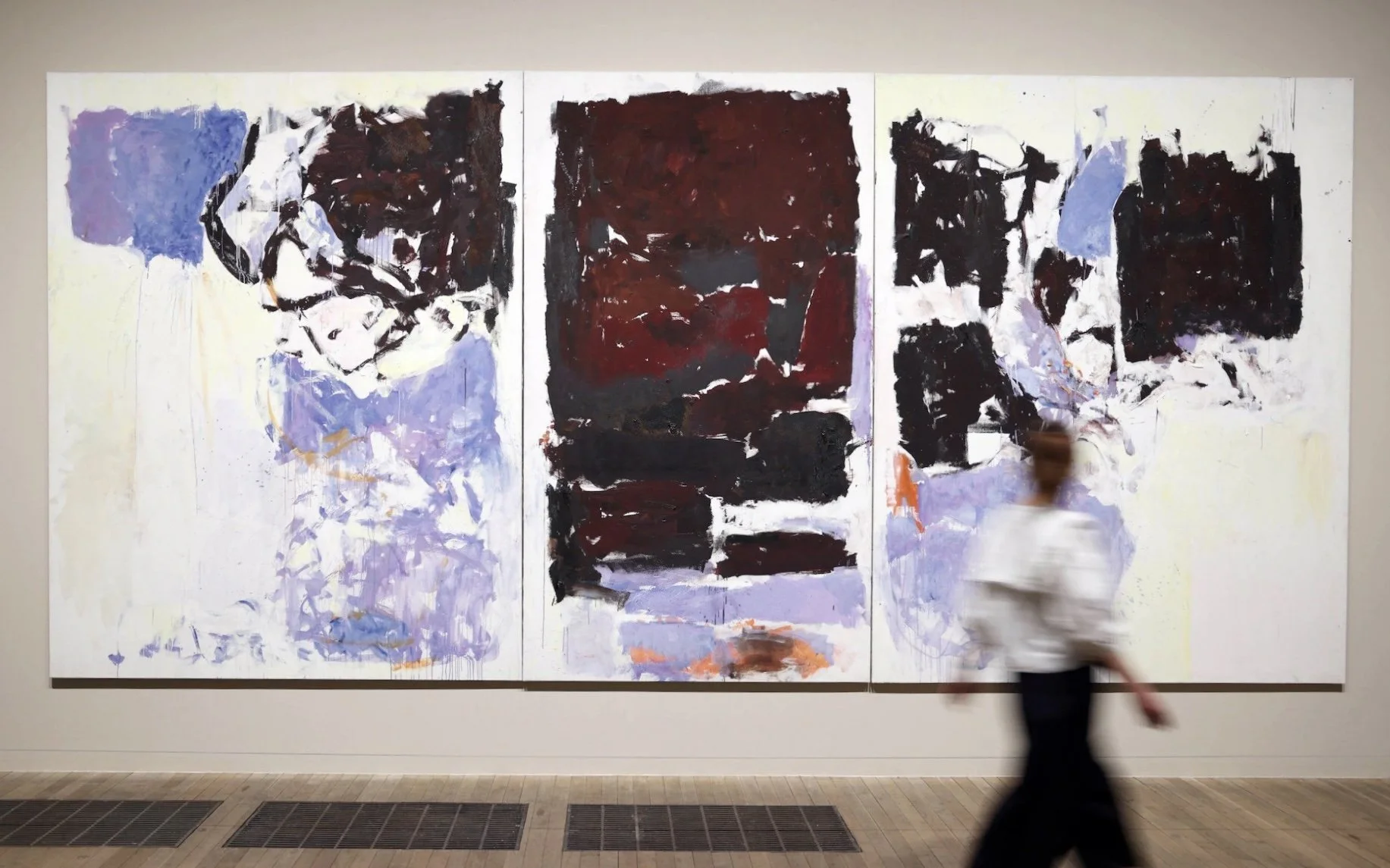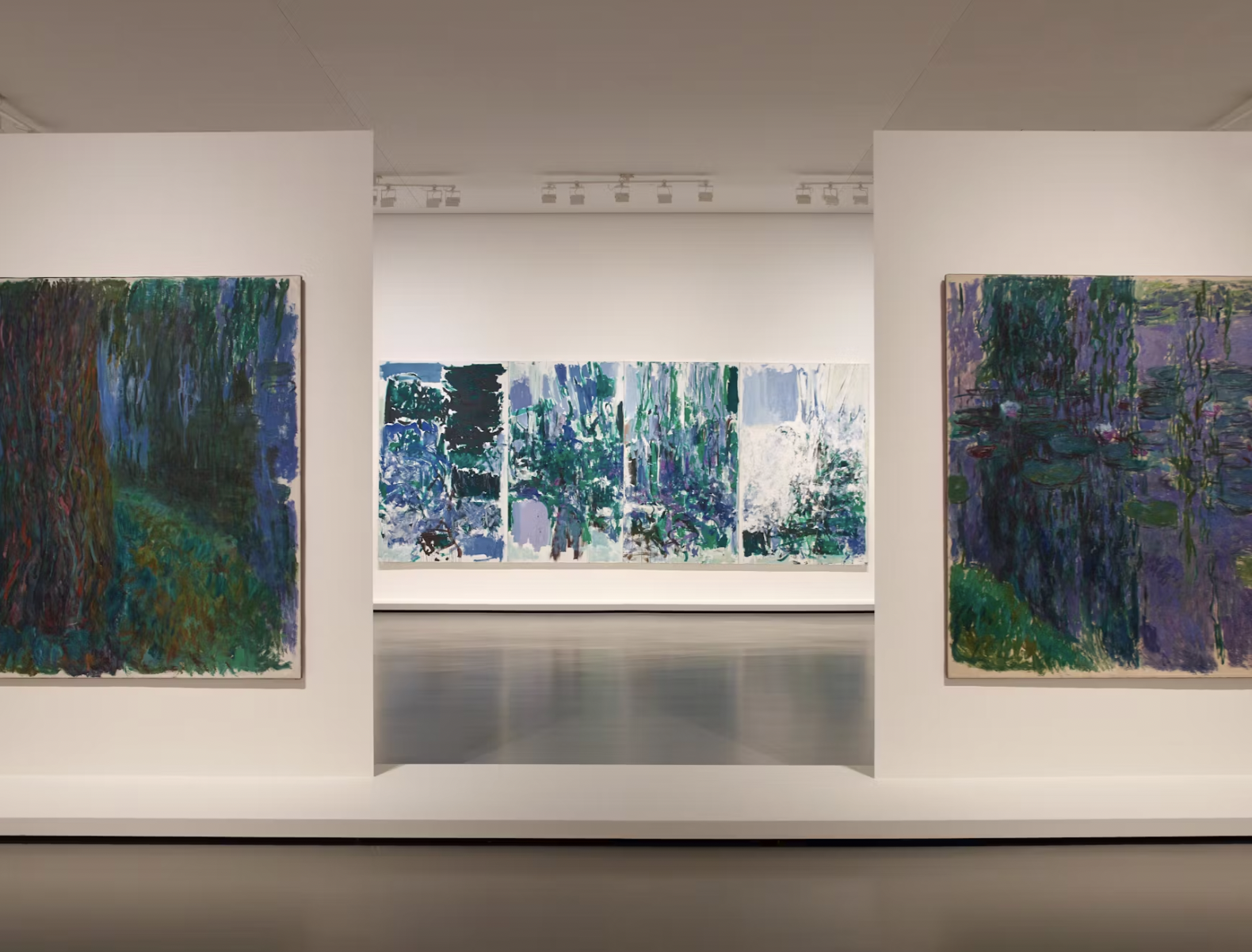Joan Mitchell: A Landscape of Memory and Motion
In Iva (1973), Joan Mitchell transformed emotion into movement, memory into paint. Created during her early years in Vétheuil, the small French village overlooking the Seine that she made her home in 1968, this monumental triptych captures the physical and emotional pulse that defines her mature work.
“Music, poems, landscape, and dogs make me want to paint, and painting is what allows me to survive,” Mitchell once said. Few statements describe her practice more directly. For her, painting was not representation but existence, a way to breathe, to remember, to stay alive.
Born in Chicago in 1925, Mitchell was part of the second generation of Abstract Expressionists, exhibiting alongside Willem de Kooning and Helen Frankenthaler. Yet her voice was entirely her own: fierce, lyrical, and emotionally charged. In the 1950s she began dividing her time between New York and Paris, eventually settling in France, a move that freed her from the macho energy of the New York School and allowed her to paint from a deeper, more introspective place
In Vétheuil, Mitchell converted a barn into a light-filled studio large enough for her to move freely around the canvas. Her triptychs became compositions of rhythm and breath, paintings to be walked through as much as painted. The physicality of her process, shaped by her background as a competitive figure skater, turned each gesture into a movement of body and mind combined.
In Iva, broad fields of brown and black collide with flashes of violet and blue. The surface feels alive, scraped, dripped, and layered into a space suspended between turbulence and calm. Named after her beloved German Shepherd, the painting bridges the personal and the universal, an abstraction that breathes with loyalty, affection, and endurance.
Mitchell once remarked, “I paint what nature leaves with me.” Her landscapes were never literal, they were felt through memory and translated through gesture. Iva embodies this approach completely: a portrait of feeling in motion, where colour and memory move as one.
Collector’s Note
Iva is now on long-term loan to Tate Modern in London, a placement that underscores its importance within Mitchell’s oeuvre and within post-war abstraction as a whole. This institutional recognition positions her alongside major figures of both European and American modernism, affirming her as a bridge between two art histories.
Painted in 1973, Iva belongs to Mitchell’s Vétheuil period, when she reached a new balance between energy and structure. Her triptychs from this era, including La Vie en Rose and Hemlock, are considered her most symphonic compositions. Many are now held in major museums such as Tate, MoMA, the Art Institute of Chicago, SFMOMA, and the Centre Pompidou. Following the acclaimed 2021 retrospective organised by SFMOMA and the Baltimore Museum of Art, Mitchell’s status was reaffirmed at the highest level.
Large-scale works from the 1950s, 60s, and 90s have since set record prices at auction, often surpassing USD 20 million, a reflection of their rarity and institutional demand. For collectors, Iva represents a pivotal moment in Mitchell’s career, where emotion, memory, and gesture became one and the same. It is a painting that breathes, turning love into gesture, and life into legacy.




